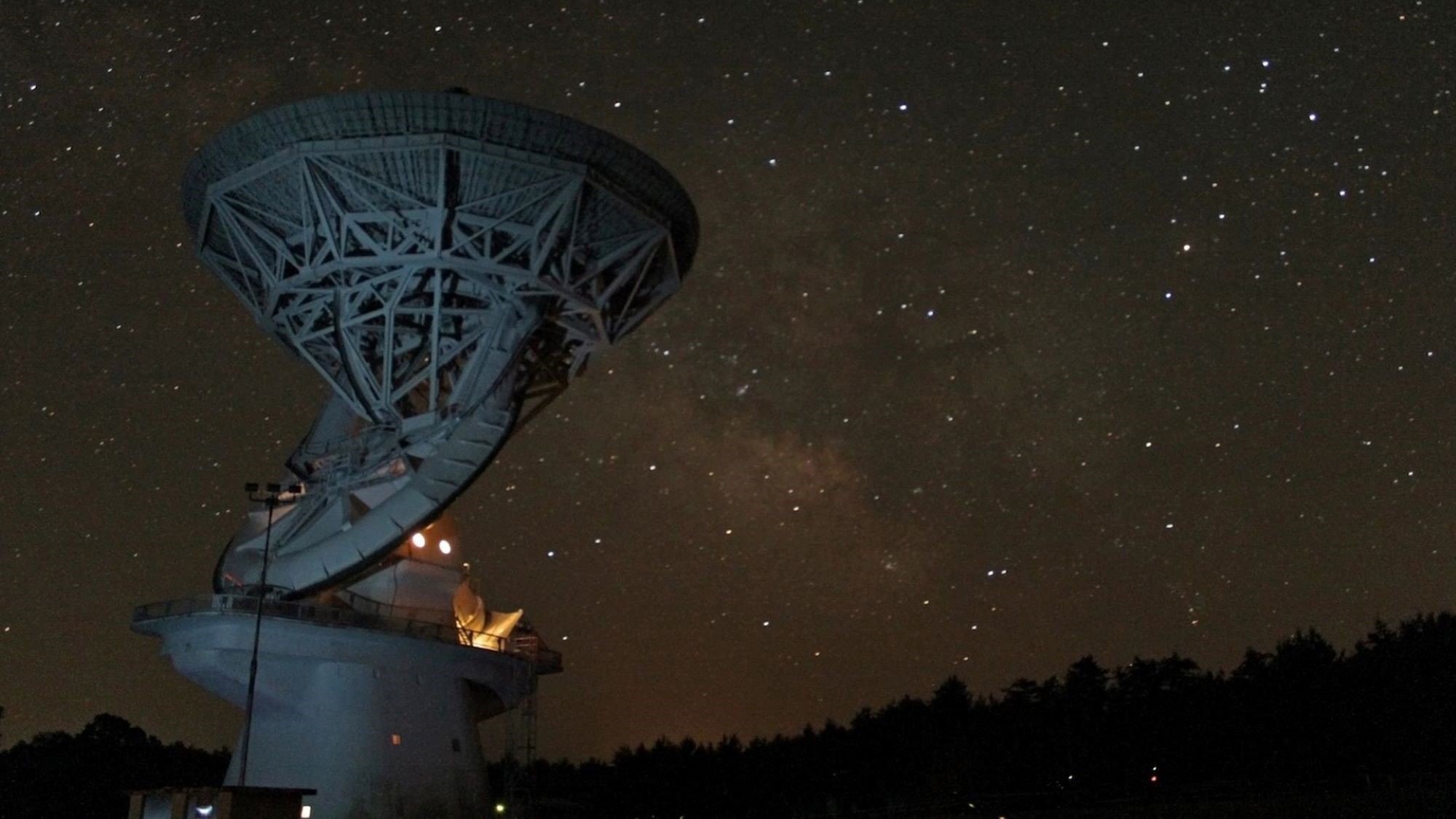

The hunt for aliens isn’t as sensational or speculative as you might think. In fact, astronomers are constantly inventing practical ways to search for intelligent life in our universe. Research recently published in the Astronomical Journal describes a pioneering method to look for radio beacons at the center of the Milky Way—a new idea for how extraterrestrials might send us signals. (Spoiler: the study authors didn’t find any beacons…yet!)
Astronomers have been scanning the sky with radio telescopes since the dawn of the Search for Extraterrestrial Intelligence, or SETI, in the 1960s, when they began listening for technological messages from the stars. In particular, they’ve been looking for so-called narrowband signals—blips of radio waves that occur over a very small range of frequencies, which couldn’t be produced by nature. Narrowband messages generally have to target a specific star, whereas a centralized radio beacon could cast a wide net, sweeping across the galaxy.
“This paper is hugely important for the Search for Extraterrestrial Intelligence because it contains the first large survey for radio technosignatures that are periodic,” says SETI Institute astronomer Sofia Sheikh, a co-author on the new work. Periodic means these signals would be “flashing over time like a lighthouse,” she says, “instead of assuming that the signal has to be on continuously like a streetlight.”
[Related: Alien civilizations could send us messages by 2029]
Sheikh and other collaborators, including Cornell University astronomer Akshay Suresh, propose these repeating pulses of radio emission could originate from some sort of rotating beacon. If situated at the center of the galaxy, such a beacon could be a particularly efficient way of communicating across vast distances. The signals from this kind of beacon may also be easier to find while sifting through radio data, which is often contaminated with the omnipresent buzzing of Earth’s technology.
These beacons would be more energy efficient compared to the continuous narrowband signals astronomers previously looked for. What’s more, “their regularly flashing nature makes them easy to detect with algorithms, differentiable from human-based radio interference, and generally obvious as something weird,” Sheikh explains. Looking toward the galactic center is also a great way to increase the odds of spotting something, since the concentration of stars is higher in the middle of the Milky Way. More stars means more planets and more chances for life to arise.
“It’s a logical technique for searching for events or transmissions that we can’t otherwise predict,” agrees Penn State astronomer Macy Huston, who is not affiliated with the findings. But, there’s a catch— although the center of the galaxy is dense with stars, many astronomers predict the radiation there makes it too dangerous for life to arise, putting it outside the so-called Galactic Habitable Zone.
[Related: Why astronomers are blasting Earth’s location to potential intelligent aliens]
That didn’t deter Sheikh, Suresh, and their teammates, who used the world’s largest steerable radio dish, the Green Bank Telescope in West Virginia, to test out their probe for galactic beacons. After looking at the central 600,000 stars in the Milky Way for five hours, nothing extraordinary jumped out of the data. This amount of searching, though, is like exploring a single drop of water plucked from an entire swimming pool; just because nothing showed up in this first search, it doesn’t mean the theory of galactic beacons is bust. Suresh is particularly excited that the algorithm developed for this search will allow astronomers to easily “explore their data for pulsating signals” in future scans.
“The jury is still out on the general prevalence of technological life in the universe,” says Sheikh. Although the progress may be slow, steadily sifting through the whole pool of stars in the galaxy is the only way “that we’ll ever be able to say anything conclusive about the prevalence of technological life, and this paper brings us one step closer.”
